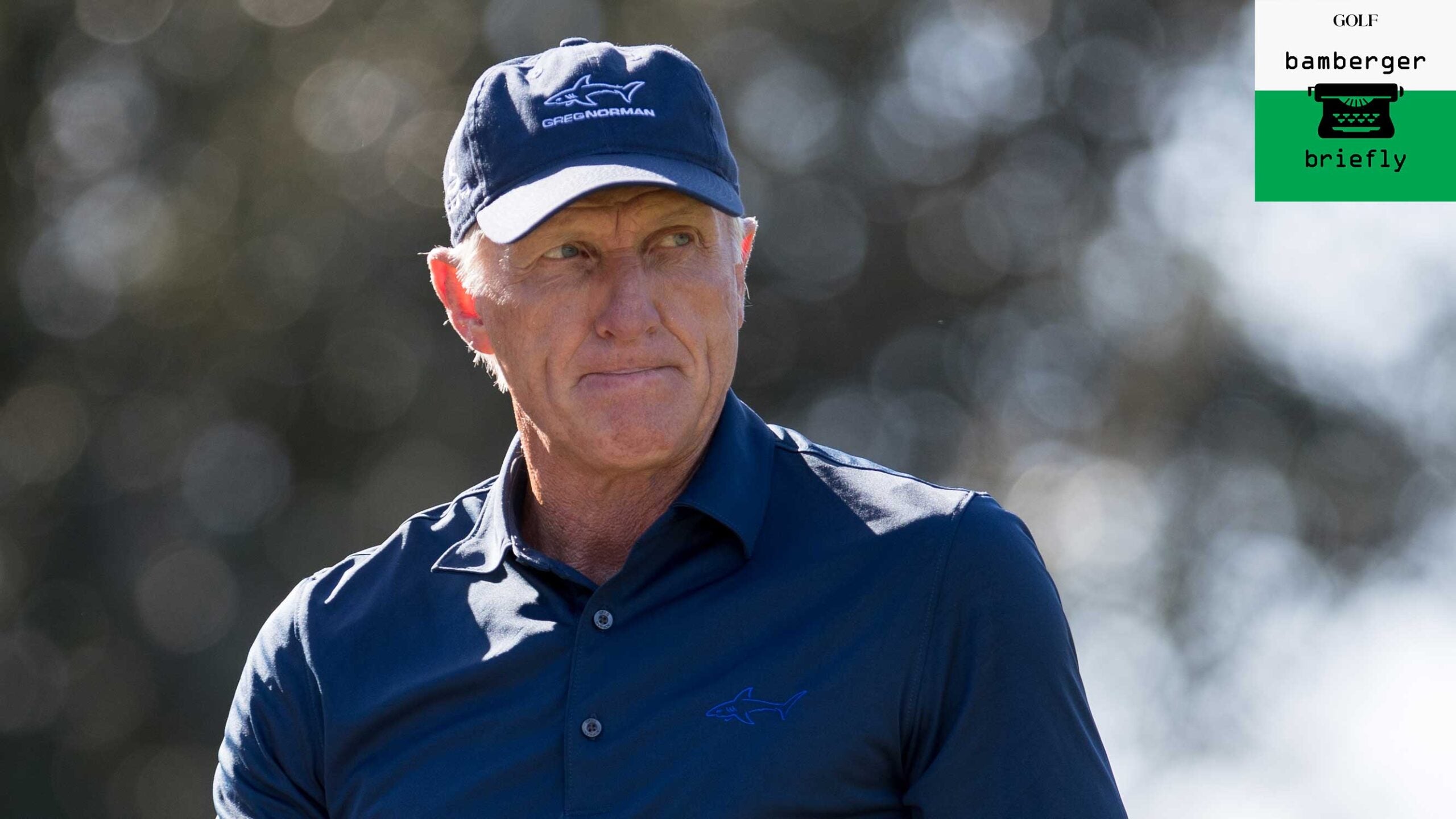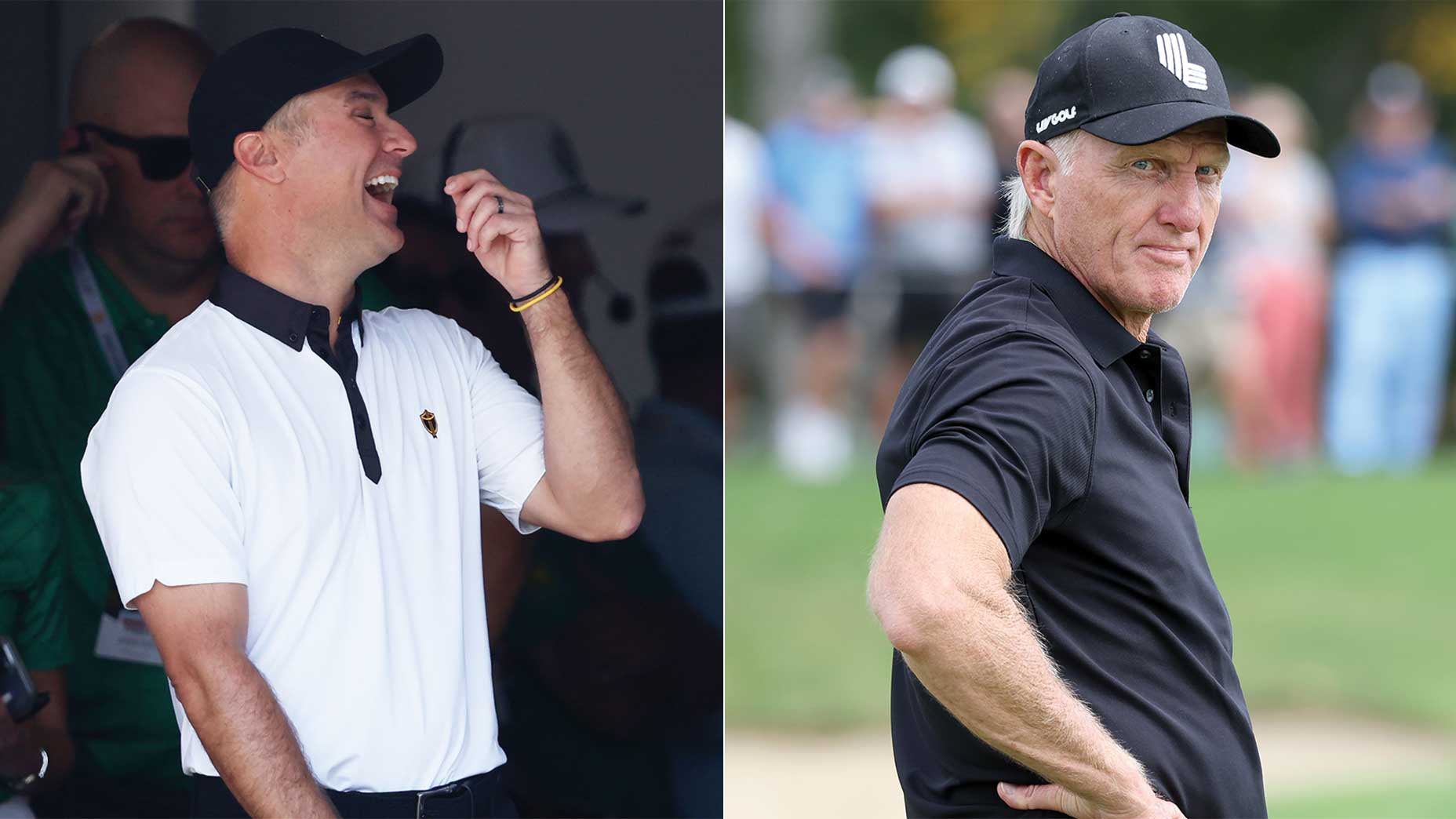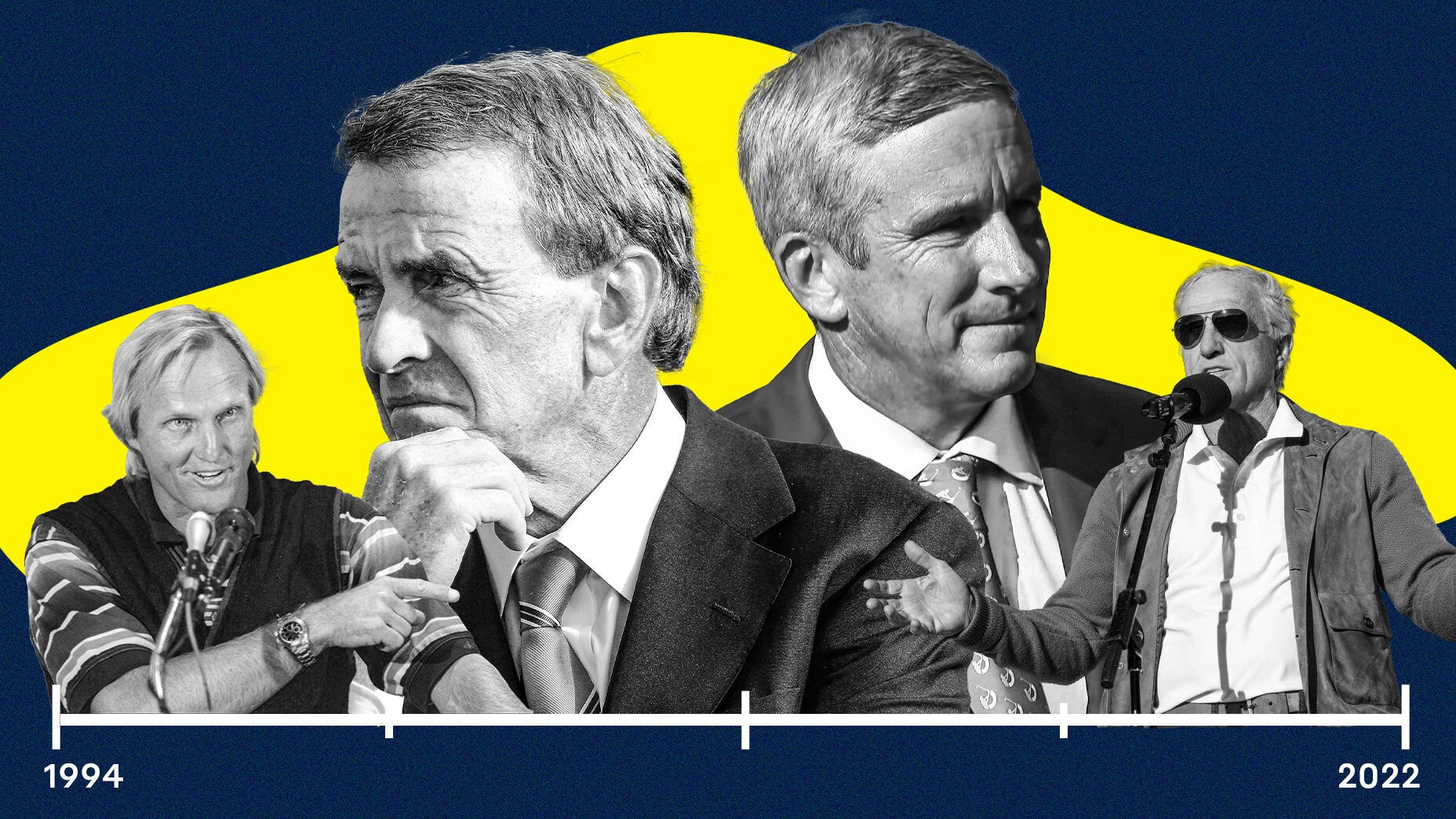In 1994, Greg Norman attempted to launch a startup league called the World Golf Tour. The bid flamed out, blocked by the PGA Tour, but the idea never went away. Not in the sport’s consciousness nor in Norman’s.
On Friday morning, a new company called LIV Golf Investments announced Norman as its CEO. Our Michael Bamberger tried to make sense of the press release, which announced an investment of $200 million over 10 years to the Asian Tour, promised to “holistically improve the health of professional golf” and hinted that “this is only the beginning.” ESPN’s reporting suggested that while this is a different endeavor from the Premier Golf League, Norman will be commissioner of a new league that hopes to have its first events as soon as 2022.
To borrow a quote from another brainchild of the mid-90s, Mrs. Doubtfire, let me be the one to ask: What the hell is going on here?
Rumors and proposals for a global challenger to the PGA Tour have been swarming for multiple years, but it’s been tough to know just how seriously to take them. Now, though we’re talking about a big name (Norman), big money ($200 million, plus the promise of plenty more from the Saudi Public Investment Fund) and what feels like a big moment. Now what?
‘This is only the beginning’: Greg Norman to helm Saudi-funded golf investment group, reveals plansBy: Michael Bamberger
Here are 10 burning questions facing the new startup.
1. Which players are involved?
The short answer is we don’t know yet.
The longer answer is that we might have some hints. Could Golfweek‘s list of eight players who have applied for waivers to play in the 2022 Saudi International overlap with the new league? Maybe, maybe not. Some PGA Tour stars have declared their lack of interest in a new breakaway tour, including World No. 1 Jon Rahm and Rory McIlroy, who denounced the source of the money at the 2020 Players Championship.
There have been plenty of rumors of players involved, but I’d imagine plenty more feeling-out conversations happening at Tour events.
PLAYER 1: “You been reading about this new golf Tour?”
PLAYER: 2: “Yeah…”
PLAYER 1: “Pretty crazy, huh?”
PLAYER 2: “Yeah, pretty crazy…”
PLAYER 1: “So, when you say ‘crazy,’ do you think, like…”
And so on. There’s no question the league needs premier golfers to be a success. The question is how many big-name players it needs to succeed, who those names will be and whether there will be a domino effect should a few players commit.
2. What is the format?
We’ve heard several different versions of this, too. ESPN’s report makes it clear that this is a different thing than the 48-player team-format fields proposed by the Premier Golf League. But it seems very likely there will be both team and individual components to these events. Because past breakaway tours have been pitched as an alternative to the PGA Tour, it seems unlikely that we’d see the 72-hole stroke play format we’ve become so accustomed to week-in and week-out.
Can the PGA Tour gain popularity by following Formula 1’s footsteps?By: Sean Zak
3. Where will these events be played?
Another good question! We don’t know. But given the source of the investment, it seems likely that at least some of the events will take place in Saudi Arabia. Given the scope of the 10-year commitment to the Asian Tour, it seems likely there will be some events in other countries within its jurisdiction. And because the United States is the current center of the professional golf world, it stands to reason that any new tour would want a significant presence here, too. Time will tell.
4. How much money are we talking — and how does the money work?
Now that we’ve dispensed with the who, what and where, let’s get to the “how much?”
The money announced thus far is the $200 million commitment to underwrite 10 new full-field Asian Tour events, to be held in Asia, Europe and the Middle East. That’s a significant financial investment, obviously. But it also seems likely that’s just the beginning.
Luring players to a breakaway tour will mean some hybrid of contracts, appearance fees and significant purses. It’s difficult to even guess the figures involved here — reports of signing bonuses include figures north of $30 million — because the whole idea is that they’ll dwarf the guaranteed money of playing on the PGA Tour. That money will come from a reservoir of more than $500 billion in assets held by the Public Investment Fund.
5. How will the PGA Tour respond?
More to the point, how can the PGA Tour respond? Commissioner Jay Monahan has intimated that anybody who joins a breakaway tour would be suspended and likely barred from playing the PGA Tour. Whether he would actually have the power to do so is outside my area of expertise, and different legal minds seem to have different perspectives on the matter.
In other words, the PGA Tour isn’t going to be happy with players who leave, and that will have implications for its membership in terms of World Ranking, Ryder Cup eligibility, just to name two.
6. What does this mean for the Asian Tour?
An infusion of money and attention. The Saudi International’s 2022 shift from the European Tour to the Asian Tour has already meant it will be the highest-profile event on the Tour, and the new LIV cash will mean greater outside interest from players. PGA Tour pros will still need waivers to participate — several have already applied for the Saudi event — and it’s unclear how willing the Tour will be to grant those. But the Asian Tour will instantly become a more attractive developmental tour from a financial perspective. It will be interesting to see whether would-be Korn Ferry Tour pros are lured by the prospect of a paycheck abroad.
7. How will people watch?
Is there a major broadcast network that will pick up coverage of a new tour — particularly one with the complex financial ties that define this mysterious tour? NBC/Golf Channel and CBS are the “establishment” broadcasters in the golf world, but they’re each significantly invested in the PGA Tour. A new tour would require a new TV partner. Fox Sports has recent experience covering golf; from 2015-19, it broadcast the men’s and women’s U.S. Opens, among other USGA events. So does Turner Sports, which has carried the first four editions of The Match.
‘This one cuts deep’: Greg Norman miffed by Rory McIlroy’s Premier Golf League oppositionBy: Josh Sens
8. Will people watch?
In some ways this is the biggest question, right? And the answer will tell us something about why people watch golf in the first place. Is it for the specific players and personalities? Is it the tradition of each tournament, that tournament’s place on the schedule and flow of the season? Is it for entertainment, devoid of historical context?
The pessimistic version would be this: The Saudi International has boasted a strong field several years in a row but hardly registers in golf fans’ consciousness. More money for players doesn’t directly translate to more intrigue for viewers. Fans won’t be familiar with the format, the settings or the feel of the entire thing — and golf fans are creatures of habit.
The optimistic vision would go something like this: Fans are ready for something different. The 72-hole stroke play format is fine but stale, and the week-to-week action on the PGA Tour isn’t saturated enough with big-time names that truly move the needle. Things like The Match or even Bryson DeChambeau’s quest for Long Drive success have demonstrated that golf fans will stray from their usual viewing habits to check out something new. This will definitely be new.
9. How are golf fans supposed to feel about it?
If you’re looking for answers, I’m not here to give you anything simple. (All I promised were questions, after all.) Critics of Saudi involvement will cite the government’s well-documented list of human rights abuses and point to this as the latest in a “sportswashing” campaign to help rehabilitate and soften its image on a world stage.
On the other hand, this isn’t a simple world. What happens if your favorite golfer ends up playing this new tour? What happens if several of the world’s top players end up in these events? There’s Saudi investment in the Premier League now, and the Kingdom has played host to several different sporting events. Where, as a fan, do you draw a moral line? Sports are supposed to be simple escapes, right? Yikes.
10. What’s next?
When will we start getting answers to these questions? When will the first player — or, more likely, group of players — announce their commitment? How far along is this thing, anyway? Does this have plenty in common with 1994, when the PGA Tour commissioner squashed Norman’s upstart league?
Or is professional golf about to change?













